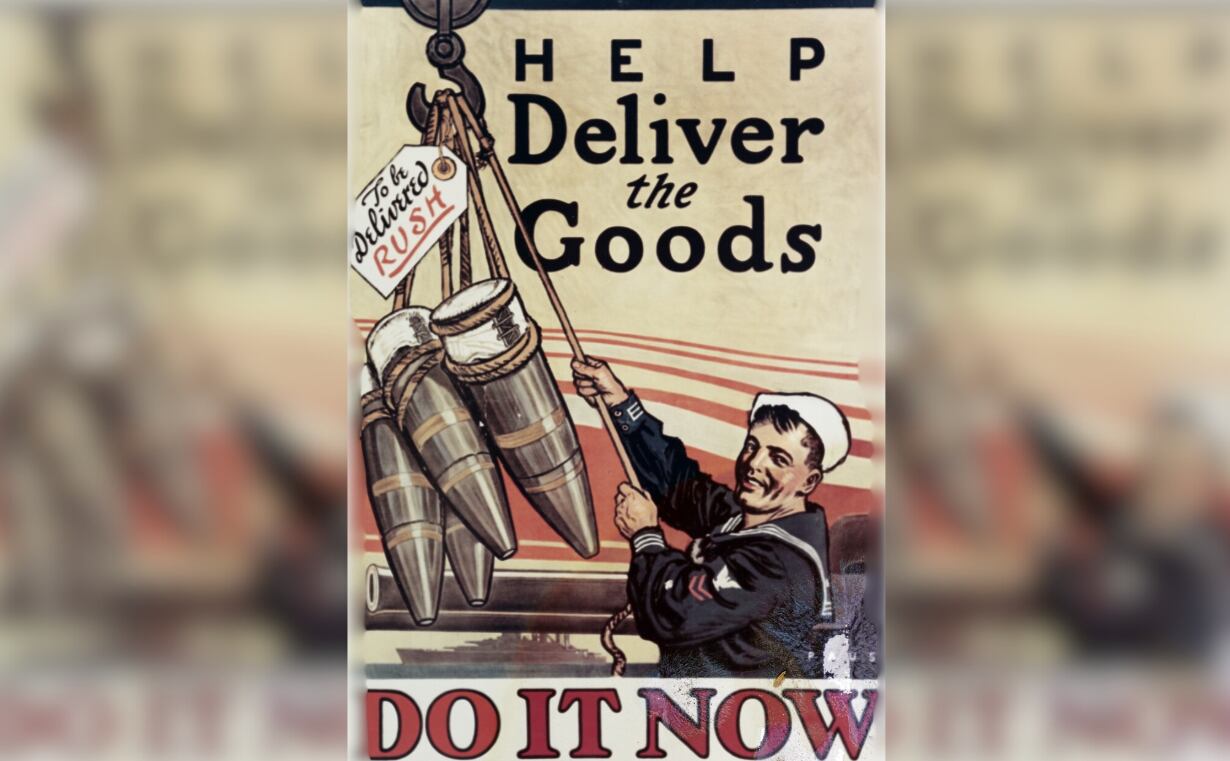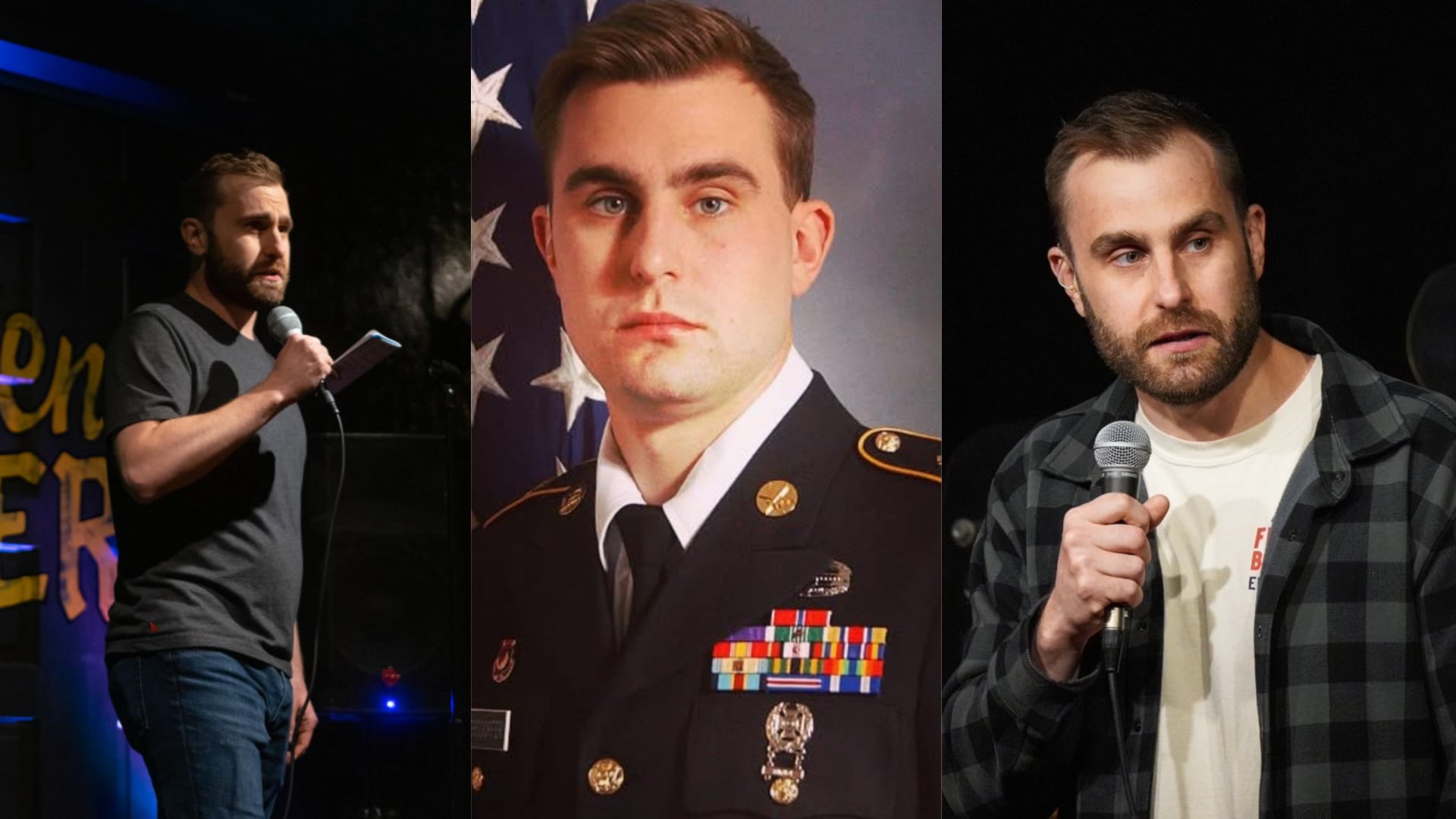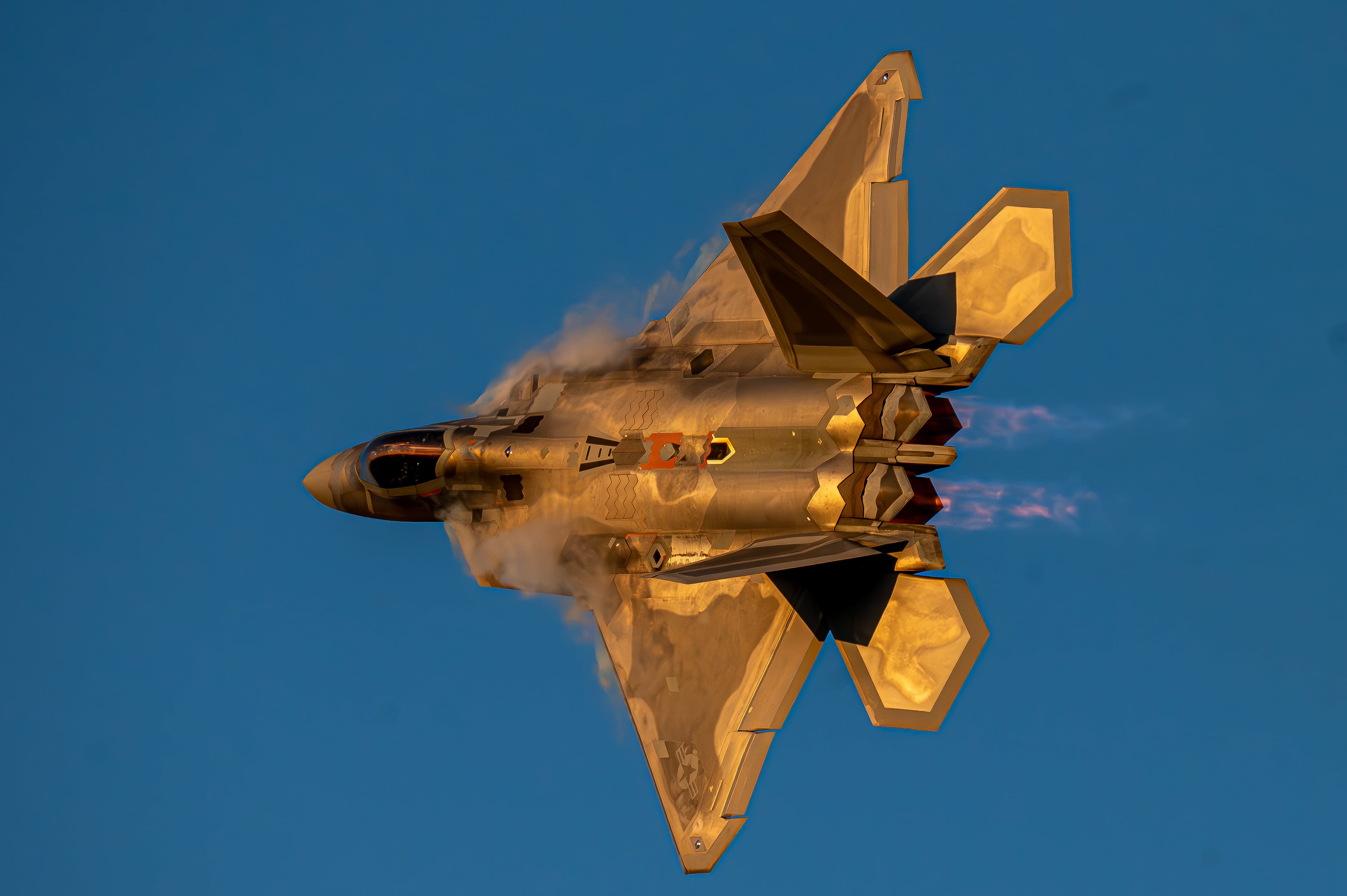The Netflix four-part animated World War II series “The Liberator” landed on the streaming giant earlier this month to coincide with Veterans Day.
Adapted from best-selling author Alex Kershaw’s book of the same name, the series “traces the remarkable battlefield journey of maverick U.S. Army officer Felix Sparks through the Allied liberation of Europe — from the first landing in Italy to the final death throes of the Third Reich,” according to the show’s synopsis.
“Over five hundred bloody days, Sparks and his infantry unit battled from the beaches of Sicily through the mountains of Italy and France, ultimately enduring bitter and desperate winter combat against the die-hard SS on the Fatherland’s borders. Having miraculously survived the long, bloody march across Europe, Sparks was selected to lead a final charge to Bavaria, where he and his men experienced some of the most intense street fighting suffered by Americans in World War II.”
Already having experienced the unimaginable horrors or war, Sparks, a member of the racially diverse, Oklahoma-based 45th “Thunderbird” Infantry Division, eventually comes face to face with the nightmarish scenes at Dachau concentration camp. There, Sparks witnesses “scenes that robbed the mind of reason — and put his humanity to the ultimate test,” the synopsis reads.
Well-received since its release, Netflix’s “The Liberator” made history by becoming the first big market series to employ an animated technology known as Trioscope, a cost-effective blend of live-action and CGI animation that provided the show’s creator Jeb Stuart (“Die Hard,” “The Fugitive”) the flexibility to sculpt a more expansive world in which the story could thrive.
Stuart, who has been in Ireland filming an upcoming Netflix series about Vikings, spoke to Military Times about the innovative project and what it could mean for the future of military storytelling.
GIVEN YOUR PAST BODY OF WORK, WHAT WAS IT THAT DREW YOU TO THIS PROJECT?
It’s hard to say it has anything to do with my past body of work because the business changes so much, but about seven years ago I started to move out of the feature world. I wanted to get involved in things that could be told in this evolving streaming world. And there were some very interesting pieces out there that I thought would work really well in a long form.
“The Liberator” was this episodic piece that just seemed to check a lot of boxes for me. It had great action, it was World War II-centric and was primarily based in Italy, where my father had been a B-17 navigator.
One of the things I learned growing up was how little attention the Italian campaign got compared to Normandy or parts of the Pacific. There had to be a reason for that, and so, reading this book, Kershaw captured a lot of the growing pains of the Army and how they pertained to the diversity of this unit.
Telling stories about diverse heroes is something that’s really crucial and long overdue in American filmmaking.
YOU MENTIONED YOUR FATHER’S TIME AS A B-17 CREW MEMBER. DID HE EVER SHARE HIS EXPERIENCES WITH YOU?
He told me very little. I know he did well over 25 missions, flying over the Alps on bombing runs over Germany, but throughout his life he kept things very close to the vest.
Still, one thing happened when I was scouting locations that was really interesting. I was in Croatia, and I got to the top of one of the little islands that he personally remembered from being over there. So, he’s talking to me on the phone from his retirement community back in North Carolina, and he says, “I want you to turn and look to the southwest about 70 degrees.” So, I look and there was this little smudge out there on the horizon, a little island way out there. He said, “Well, if that little smudge wasn’t there, you wouldn’t be here.”
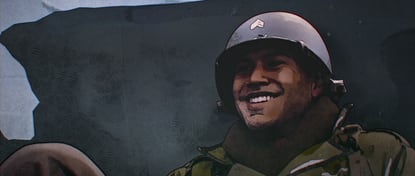
On his 25th mission, he was coming back over the Alps and they lost two engines. They had just enough in the plane to make it out over the Adriatic. There was supposed to be an old British landing strip on that specific island, but on their approach they realized it was completely blanketed by thick clouds.
At 20 years old, my father had to plot a course to land the plane on a runway — probably abandoned — on this tiny island shrouded in clouds. But he did it. They crash landed the plane on the island, but the crew survived. That was something he was obviously very proud of.
GIVEN THE INTENSITY OF EXAMPLES LIKE THAT, WERE YOU PLEASED TO HAVE THE ADDED FLEXIBILITY, STORYTELLING- AND ACTION-WISE, THAT THIS NEW ANIMATION PROVIDED?
It’s funny, when you’re writing with a network and you’re trying to soft sell the budget, you might not fill the sky with as many bombers as you might be able to if you were able to simply create them with a stroke of a brush.
With the animation, we suddenly had the ability to add more planes, shells and bombs. Instead of struggling to afford 25 German extras charging at you, we could portray the 2,500 as it happened in real life. It was really a freeing process. And this isn’t just cost-effective — it really is a beautiful piece of artwork and a sort of genre unto itself.
This approach also presents opportunity for tremendous directors out there who may have never had an opportunity to direct something with so much action. Imagine shooting a show where you need multiple locations, and you have to go out and pay for those spaces. Then you have to bring in generator trucks, catering, all this kind of stuff. With Trioscope animation, suddenly you don’t have to do that. Everywhere you want to go is on the same stage.
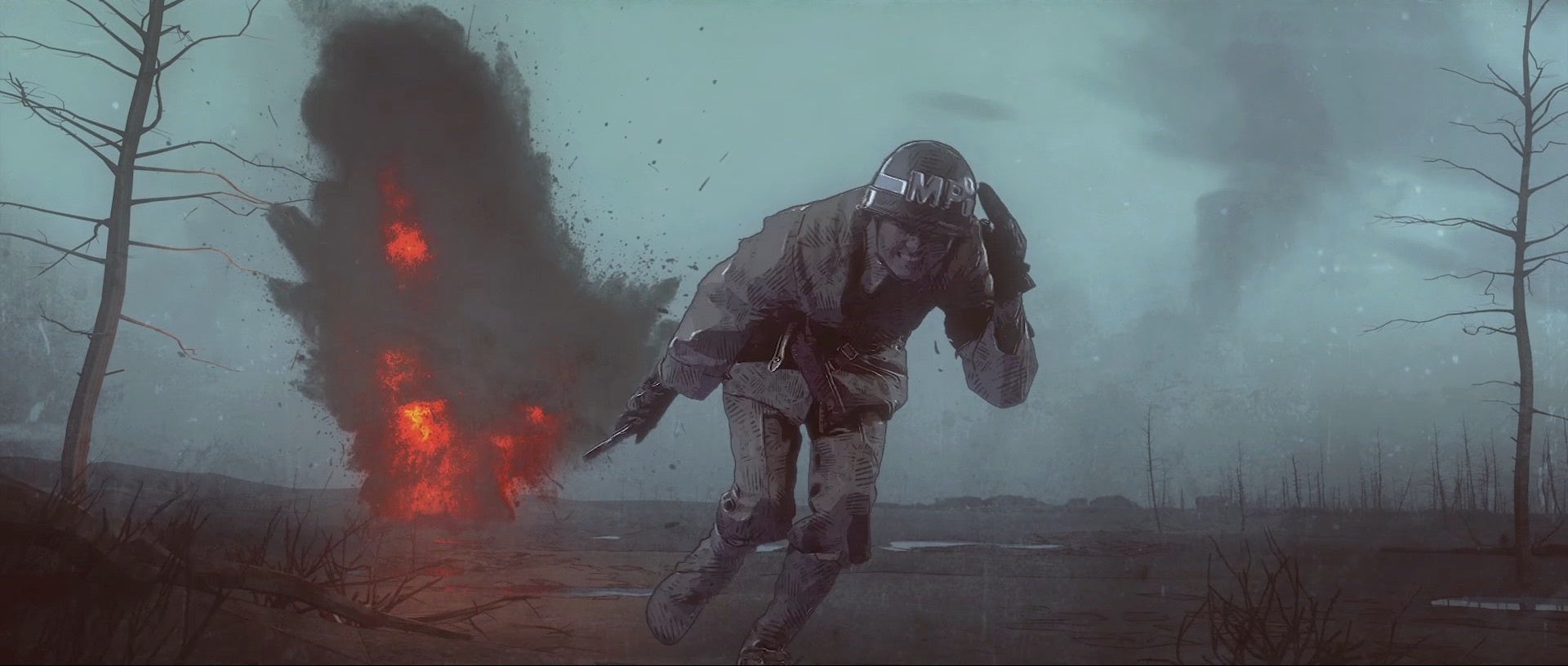
HOW MUCH INTERACTION WITH ALEX KERSHAW WENT INTO THE ADAPTATION PROCESS?
I actually had zero interaction with Alex — I know that sounds cold-blooded. Alex had written a spectacular book, which was my template, but I had to take certain aspects and fictionalize elements to create dramatic detail that might not be available by pulling directly from a book that would lend itself to a terrific documentary.
You try not to do too much and break an author’s heart by altering their baby, but throughout the process I used Alex’s fabulous book as my Bible. I also did a ton of research on the history of the 45th division, looked into the personal accounts of German soldiers who fought against against them, and watched various interviews of Felix Sparks over the years.
The goal in this is obviously to make sure you’re authentic, but realistically it’s almost impossible in any type of recreation to be completely accurate. You can get the facts right, the number of men deployed, the casualties, the dates and times, but once you’re in it, the personal histories of the soldiers vary tremendously. Two men could be fighting side by side, but each come away with a completely different telling of the exact same story.
So, over the years, I’ve tried to preserve the authenticity about battle, but I might take liberties with the characters, and that’s something that differs from what Alex’s book has.
WHAT DO YOU HOPE PEOPLE TAKE AWAY FROM SEEING DIVERSE CHARACTERS WHO MIGHT NOT FIT THE MOLD OF THE MILITARY HERO AUDIENCES ARE USED TO?
First of all, I had a fabulous cast. It was really important for us to be authentic by including Latino and Native actors who have a tremendous sense of self-identity in terms of how they want to authentically portray these characters.
One of the things I always liked about “The Liberator” was that it’s not a white savior story. You’ve got a white commanding officer in Felix Sparks, but he never sees himself as being any sort of white parental figure of ethnically diverse troops. He saw himself as a partner with these men. It was all about survival and bringing home as many of these men as possible from an unthinkably horrific situation.
Sparks tried to lead by example, but in the end, he probably took away from his troops more than he ever gave to them. And for me that was one of the primary ingredients I pulled from Alex’s book. I thought, if we could showcase that, then you’re creating a band of brothers that sort of feeds itself.
Many thanks to Mr. Stuart for taking the time to discuss this trailblazing series. “The Liberator” is streaming now on Netflix.
J.D. Simkins is the executive editor of Military Times and Defense News, and a Marine Corps veteran of the Iraq War.
Tags:
the liberator netflixnetflix wwii showbest wwii showswwii show netflixalex kershaw the liberatornetflix wwii seriesbest series on wwiithe liberatorIn Other News






